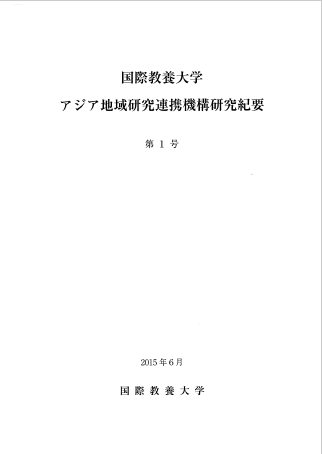Volume 11
Displaying 1-9 of 9 articles from this issue
- |<
- <
- 1
- >
- >|
-
2020Volume 11 Pages 1-24
Published: 2020
Released on J-STAGE: November 13, 2020
Download PDF (1616K) -
2020Volume 11 Pages 25-42
Published: 2020
Released on J-STAGE: November 13, 2020
Download PDF (1336K) -
2020Volume 11 Pages 43-56
Published: 2020
Released on J-STAGE: November 13, 2020
Download PDF (1940K) -
2020Volume 11 Pages 57-71
Published: 2020
Released on J-STAGE: November 13, 2020
Download PDF (1272K) -
2020Volume 11 Pages 73-98
Published: 2020
Released on J-STAGE: November 13, 2020
Download PDF (1342K) -
2020Volume 11 Pages 99-110
Published: 2020
Released on J-STAGE: November 13, 2020
Download PDF (979K) -
2020Volume 11 Pages 111-120
Published: 2020
Released on J-STAGE: November 13, 2020
Download PDF (1156K) -
2020Volume 11 Pages 121-128
Published: 2020
Released on J-STAGE: November 13, 2020
Download PDF (1202K) -
2020Volume 11 Pages 129-138
Published: 2020
Released on J-STAGE: November 13, 2020
Download PDF (1119K)
- |<
- <
- 1
- >
- >|
